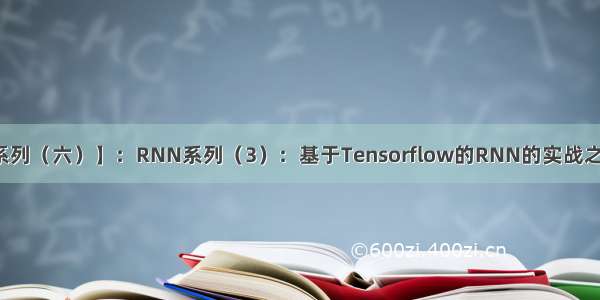
1 . 能干什么
在知乎,博客上面会看到有人分享自己的一些有意思的项目,比如下面这些,用rnn学习一个诗歌,散文,党章,小说什么的。然后,在自己生成一些东西。比如,下面的这两个例子。作为一个初学者,自己也想搭一个模型,然后试着玩一玩。
image.png
image.png
关于RNN的模型结构的基本原理,公式推导什么的,就先不在这里展开了。下面写得是,如何用tensorflow去实现这个模型。
2. 使用tensorflow 搭建这个RNN的模型去实现
读文件,将文件里面的句子分割成词,然后变成一个list。
## 预处理数据def read_file(): # Text file containing words for training training_file = 'belling_the_cat.txt' content=[] with open(training_file,'r') as f: for line in f.readlines(): # line 表示读到数据的每一行,linelist是按照空格切分成一个list linelist=line.strip().split() for i in linelist: content.append(i.strip()) content=np.array(content) content=np.reshape(content,[-1,]) #shape (204,1) return content
建立字典,建立字典的目的是实现将词转换成词向量
字典的目的是实现word-->向量,这个没有使用word2vec的算法。使用本书文本数据的词建立的向量。简化的过程,如下:
#文本数据hello ml hello dl#去重以后的词汇hello ml dl#建立字典{'hello':0 , 'ml':1 , 'dl':2 }#反向字典{0:'hello' , 1:'ml' , 2: 'dl'}
代码如下:
def mybuild_dataset(words): # words -- > ['hello','hello','world','python','tensorflow','rnn'] count = collections.Counter(words) # Counter({'hello': 2, 'python': 1, 'rnn': 1, 'tensorflow': 1, 'world': 1}) dictionary=dict() for key in count: dictionary[key]=len(dictionary) #dictionary -- > {'hello': 0, 'python': 3, 'rnn': 1, 'tensorflow': 2, 'world': 4} reverse_dictionary = dict(zip(dictionary.values(), dictionary.keys())) #reverse_dictionary -- > {0: 'hello', 1: 'rnn', 2: 'tensorflow', 3: 'python', 4: 'world'} return dictionary, reverse_dictionary #len(dictionary) --> 112
建立RNN模型训练
理解一个模型,我觉得一个比较好的方式是先搞明白它训练的输入和输出。在这个模型里面,处理训练数据的输入和输出,如下所示:
#训练数据the mice had a xxxxx# 训练的思路是,将前三个数据作为训练的输入[[the],[mice],[had]] --> 转化为词向量#将第四个词汇作为输出['a']#然后将输出的词汇转换成onehot的形式[ 0,0,0,0 ...0,1,0,0 ... 0,0,0 ] #长度是词向量字典的长度 , 置1的地方是词向量字典里面‘a’对应的输出设置为1
具体实现的代码,如下:
3.1 RNN模型的训练数据的输入
n_input = 3offset = 是一个随机的偏移,这个是程序设计上面的一个trick,不影响理解这一段代码# 输入x ,将前三个词汇转换成词向量# symbols_in_keys 是一个二维的list --> [[34], [92], [85]]symbols_in_keys = [[dictionary[ str(training_data[i])]] for i in range(offset, offset+n_input) ]# reshape 把他们转换成 (1, 3, 1)symbols_in_keys = np.reshape(np.array(symbols_in_keys), [-1, n_input, 1])
3.2 RNN模型的训练数据的输出
# 这一段代码搞定是 y_true ,把第四个词转换成词向量 onehot的类型symbols_out_onehot = np.zeros([vocab_size], dtype=float)# str(training_data[offset+n_input]) -> 'mice'symbols_out_onehot[dictionary[str(training_data[offset+n_input])]] = 1.0symbols_out_onehot = np.reshape(symbols_out_onehot,[1,-1])
3.3 RNN模型的训练
def RNN(x, weights, biases): batch_size=1 x = tf.reshape(x, [batch_size,n_input,1]) # (1,3,1) 相当于batch =1 # rnn cell = tf.contrib.rnn.BasicLSTMCell(n_hidden) init_state = cell.zero_state(batch_size, dtype=tf.float32) # final_state 的维度是 batch * n_hidden --> 1 * 512 # outputs 的维度是 batch * n_input(time_step) * n_hidden --> 1 * 3 * 512 outputs, final_state = tf.nn.dynamic_rnn(cell, x, initial_state=init_state, time_major=False) #print ("before unstack , output shape : ",outputs.shape) # output shape : (1,3,512) (batch,time_step,cell_n_hidden) #unstack 更改维度 outputs = tf.unstack(tf.transpose(outputs, [1,0,2])) #这个时候 outputs 变成了list #print ("output shape[-1] 2: ",outputs[-1].shape) # output shape : (3,1,512), outputs[-1] shape (1,512) results = tf.matmul(outputs[-1], weights['out']) + biases['out'] #(1,112) 这个的表示意义是一个(1,112)的onehot,112表示字典里面总共有112个词汇 return results #(1, 112) 这个表示的是一个onehot
完整代码
/zhaozhengcoder/Machine-Learning/tree/master/tensorflow_tutorials/ RNN学习的目录下面
训练的数据使用了伊索寓言的数据,但是数据的量很少,迭代的次数也很少。可以更换成其他的数据,然后增大迭代的次数。















